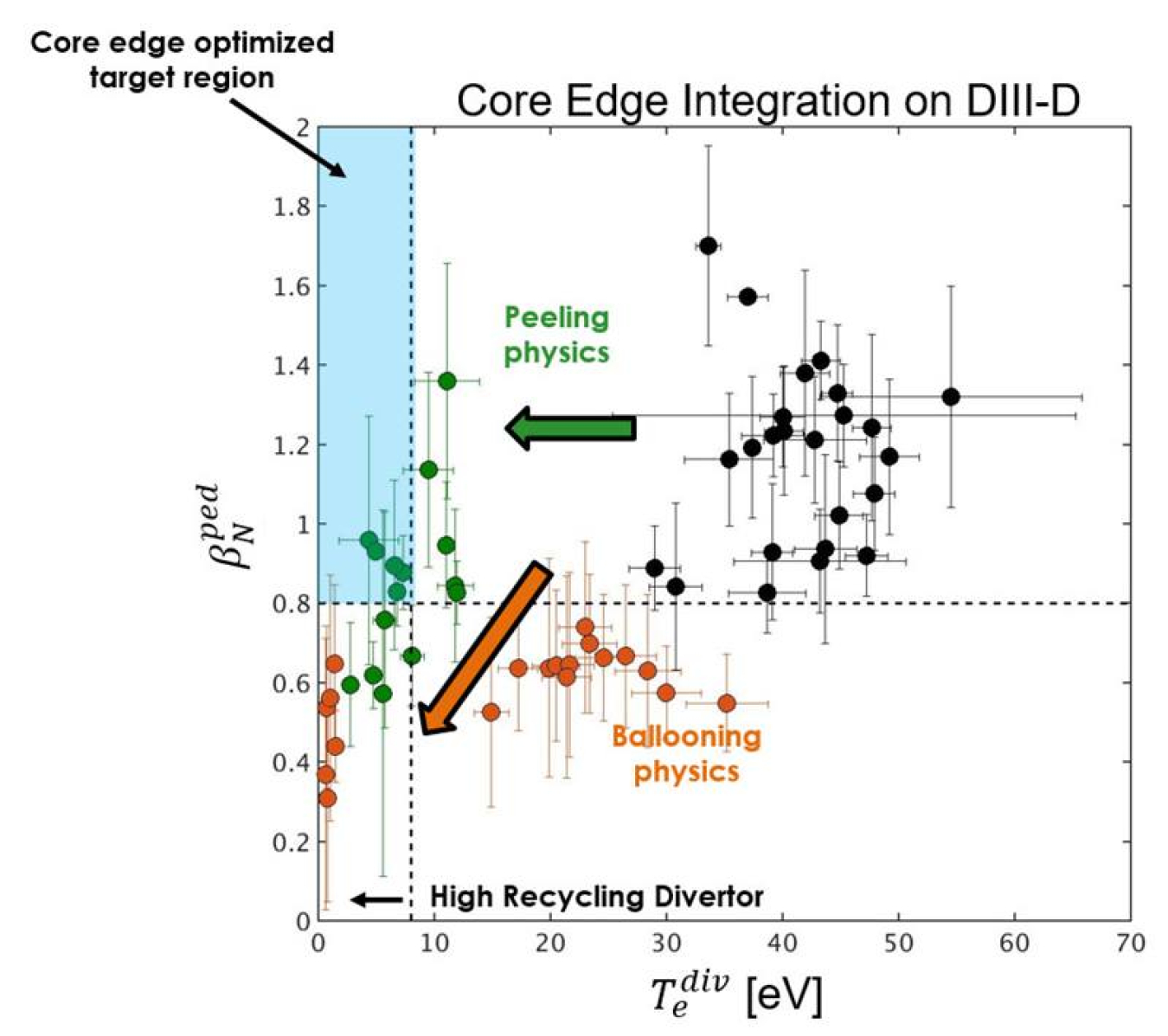Leveraging peeling physics in current tokamaks improves fusion performance and integrates with exhaust solutions for future fusion reactors.
May 16, 2022
The Science
Future fusion reactors have a conundrum: how to maintain a plasma core that is hotter than the surface of the sun without melting the device walls. Researchers call this challenge “core-edge integration.” One method of cooling the plasma edge is to inject impurities such as nitrogen. The impurities absorb heat and release the energy as light that dissipates evenly across the walls. New research finds that a previously identified operating regime called Super H-mode can leverage the use of impurities to improve integration. It does so by increasing temperature and pressure in the outer region of the plasma, called the pedestal. Higher pressures and temperatures at the pedestal lead to higher fusion performance in the core, while allowing for a suitable energy dissipation outside of the pedestal.
The Impact
The magnetic confinement vessels used in fusion research, known as tokamaks, exhaust heat and particles from the plasma during operation. This exhaust path, known as the divertor, can handle high heat and particle loads within certain limits. Injecting impurities such as nitrogen can reduce the temperature and heat flux to levels the material can withstand. However, these impurities often penetrate into the core, which reduces overall fusion performance. Super H-mode leverages specific plasma responses, or instabilities, to reach much higher pressure and density. The higher density helps to dissipate radiative heat.
Summary
Research at the DIII-D National Fusion Facility demonstrated how a high-performance operating regime called Super H-mode can leverage the use of impurities to improve core-edge integration. One strategy for mitigating heat from the plasma core is to inject gases like nitrogen into the exhaust. These gases are technically impurities compared to the main plasma and radiate heat before it reaches the divertor, which reduces heat flux to levels the wall material can withstand.
The benefit of Super H-mode stems from the physics of the plasma instabilities that are prevalent with this regime. In regular regimes, two instabilities usually couple together and drive each other. One type peels off the outer layer of the plasma, while another causes it to balloon outward. In Super H-mode, strong shaping of the plasma helps decouple and isolate these processes, opening a window of high performance that leverages peeling instabilities. Peeling instabilities are preferred because they allow pressure to increase as a function of density, which increases both fusion performance and divertor dissipation. Ballooning instabilities, by contrast, cause pressure to decrease as a function of density, which degrades performance. With good control, fusion plant operators can navigate to a regime that can optimize both core and divertor performance via high density and pressure. This research, for the first time, coupled peeling instabilities with a high-density pedestal and a radiative divertor. The experiments achieved significant edge cooling with only modest effects on core performance, and theoretical simulations suggest this approach would be compatible with devices like ITER and future power plants.
Contact
Theresa Wilks
Massachusetts Institute of Technology
twilks@psfc.mit.edu
Funding
This material is based on work supported by the Department of Energy Office of Science.
Publications
Wilks, T.M., et al., Development of an integrated core edge scenario using the Super H-mode. Nuclear Fusion, 61, 126064 (2021) [DOI: 10.1088/1741-4326/ac34d6]
Related Links
American Physical Society press release: Integrating Hot Cores and Cool Edges in Fusion Reactors

